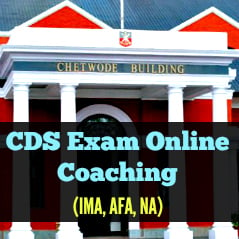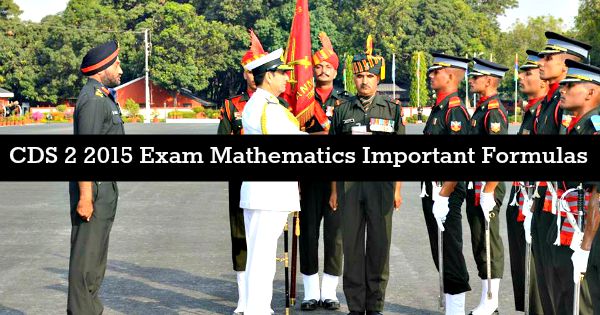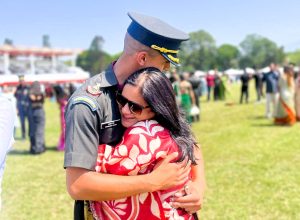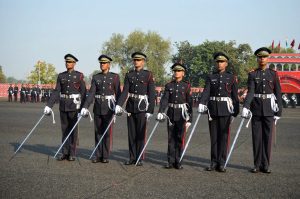Combined Defence Services CDS 2 2015 is going to be conducted nation wide on 1st November 2015 by UPSC. Candidates registered for exam are needed to start their preparation well in advance so that they can be ready when the time comes. In this article we will discuss CDS 2 2015 Exam Mathematics Important Formulas that can be very helpful for the candidates who are preparing for mathematics part of the CDSE.
CDS 2 2015 Exam Mathematics Syllabus
Arithmetic
- Number System-Natural numbers, Integers, Rational and Real numbers. Fundamental operations addition, subtraction, multiplication, division, Square roots, Decimal fractions.
- Unitary method-time and distance, time and work, percentages, applications to simple and compound interest, profit and loss, ratio and proportion, variation.
- Elementary Number Theory-Division algorithm. Prime and composite numbers. Tests of divisibility by 2,3,4,5,9 and 11. Multiples and factors. Factorization Theorem. H.C.F. and L.C.M. Euclidean algorithm, Logarithms to base 10, laws of logarithms, use of logarithmic tables.
Algebra
- Basic Operations, simple factors, Remainder Theorem, H.C.F., L.C.M. Theory of polynomials, solutions of quadratic equations, relation between its roots and coefficients (Only real roots to be considered ).
- Simultaneous linear equations in two unknowns-analytical and graphical solutions. Simultaneous linear in-equations in two variables and their solutions. Practical problems leading to two simultaneous linear equations or in-equations in two variables or quadratic equations in one variable & their solutions.
- Set language and set notation, rational expressions and conditional identities, Laws of indices.
Trigonometry
Sine x, cosine x, Tangent x when 0° ≤ x ≤ 90° Values of sin x, cos x and tan x, for x = 0°, 30°, 45°, 60° and 90°. Simple trigonometric identities. Use of trigonometric tables. Simple cases of heights and distances.
Geometry
- Lines and angles, Plane and plane figures, Theorems on
- Properties of angles at a point,
- Parallel lines,
- Sides and angles of a triangle,
- Congruency of triangles,
- Similar triangles,
- Concurrence of medians and altitudes,
- Properties of angles, sides and diagonals of a parallelogram, rectangle and square,
- Circles and its properties including tangents and normals,
- Loci.
Mensuration: Areas of squares, rectangles, parallelograms, triangle and circle. Areas of figures which can be split up into these figures (Field Book), Surface area and volume of cuboids, lateral surface and volume of right circular cones and cylinders, surface area and volume of spheres.
Statistics: Collection and tabulation of statistical data, Graphical representation frequency polygons, histograms, bar charts, pie charts etc. Measures of central tendency.
CDS 2 2015 Exam Mathematics Important Formulas
Numbers:
- Sum of first n natural numbers = n(n+1)/2
- Sum of the squares of first n natural numbers = n(n+1)(2n+1)/6
- Sum of the cubes of first n natural numbers = [n(n+1)/2]^2
- Sum of first n natural odd numbers = n^2
- Average = (Sum of items)/Number of items
Tests of Divisibility:
- A number is divisible by 2 if it is an even number.
- A number is divisible by 3 if the sum of the digits is divisible by 3.
- A number is divisible by 4 if the number formed by the last two digits is divisible by 4.
- A number is divisible by 5 if the units digit is either 5 or 0.
- A number is divisible by 6 if the number is divisible by both 2 and 3.
- A number is divisible by 8 if the number formed by the last three digits is divisible by 8.
- A number is divisible by 9 if the sum of the digits is divisible by 9.
- A number is divisible by 10 if the units digit is 0.
- A number is divisible by 11 if the difference of the sum of its digits at odd places and the sum of its digits at even places, is divisible by 11.
Percentages:
- If A is R% more than B, then B is less than A by R / (100+R) * 100
- If A is R% less than B, then B is more than A by R / (100-R) * 100
- If the price of a commodity increases by R%, then reduction in consumption, not to increase the expenditure is : R/(100+R)*100
- If the price of a commodity decreases by R%, then the increase in consumption, not to decrease the expenditure is : R/(100-R)*100
HCF and LCF:
- The H.C.F. of two or more numbers is the greatest number that divides each one of them exactly.
- The least number which is exactly divisible by each one of the given numbers is called their L.C.M.
- Two numbers are said to be co-prime if their H.C.F. is 1.
- H.C.F. of fractions = H.C.F. of numerators/L.C.M of denominators
- L.C.M. of fractions = G.C.D. of numerators/H.C.F of denominators
- Product of two numbers = Product of their H.C.F. and L.C.M.
Profit and Loss:
- Gain = Selling Price(S.P.) – Cost Price(C.P)
- Loss = C.P. – S.P.
- Gain % = Gain * 100 / C.P.
- Loss % = Loss * 100 / C.P.
- S.P. = (100+Gain%)/100*C.P.
- S.P. = (100-Loss%)/100*C.P.
Time and Distance:
- Distance = Speed * Time
- Suppose a man covers a certain distance at x kmph and an equal distance at y kmph. Then, the average speed during the whole journey is 2xy/(x+y) kmph.
- 1 km/hr = 5/18 m/sec; 1 m/sec = 18/5 km/hr
Time and Work:
- If A can do a piece of work in n days, then A’s 1 day’s work = 1/n
- If A and B work together for n days, then (A+B)’s 1 days’s work = 1/n
- If A is twice as good workman as B, then ratio of work done by A and B = 2:1
Ratio and Proportions:
- The ratio a : b represents a fraction a/b. a is called antecedent and b is called consequent.
- The equality of two different ratios is called proportion.
- If a : b = c : d then a, b, c, d are in proportion. This is represented by a : b :: c : d.
- In a : b = c : d, then we have a* d = b * c.
- If a/b = c/d then ( a + b ) / ( a – b ) = ( c + d ) / ( c – d ).
Logarithm:
If a^m = x , then m = loga(x).
- logx(x) = 1
- logx(1) = 0
- loga(x*y) = loga(x) + loga(y)
- loga(x/y) = log ax – log ay
- loga(x) = 1/logx(a)
- loga(x^p) = p(loga(x))
- loga(x) = logb(x)/logb(a)
Area and Perimeter:
- Area of a triangle = 1/2*Base*Height or
- Area of a triangle = √ (s(s-(s-b)(s-c)) where a,b,c are the lengths of the sides and s = (a+b+c)/2
- Area of a parallelogram = Base * Height
- Area of a rhombus = 1/2(Product of diagonals)
- Area of a trapezium = 1/2(Sum of parallel sides)(distance between the parallel sides)
- Area of a quadrilateral = 1/2(diagonal)(Sum of sides)
- Area of a regular hexagon = 6(√3/4)(side)2
- Area of a ring = ∏(R2-r2) where R and r are the outer and inner radii of the ring.
- Area of a circle=πr^2 or πd^2/4
- Area of semi-circle=πr^2/2
- Area of a quadrant of a circle=πr^2/4
- Area enclosed by two concentric circles=π(R^2-r^2)
- Area of a sector=Ɵ/180 degree *πr




















